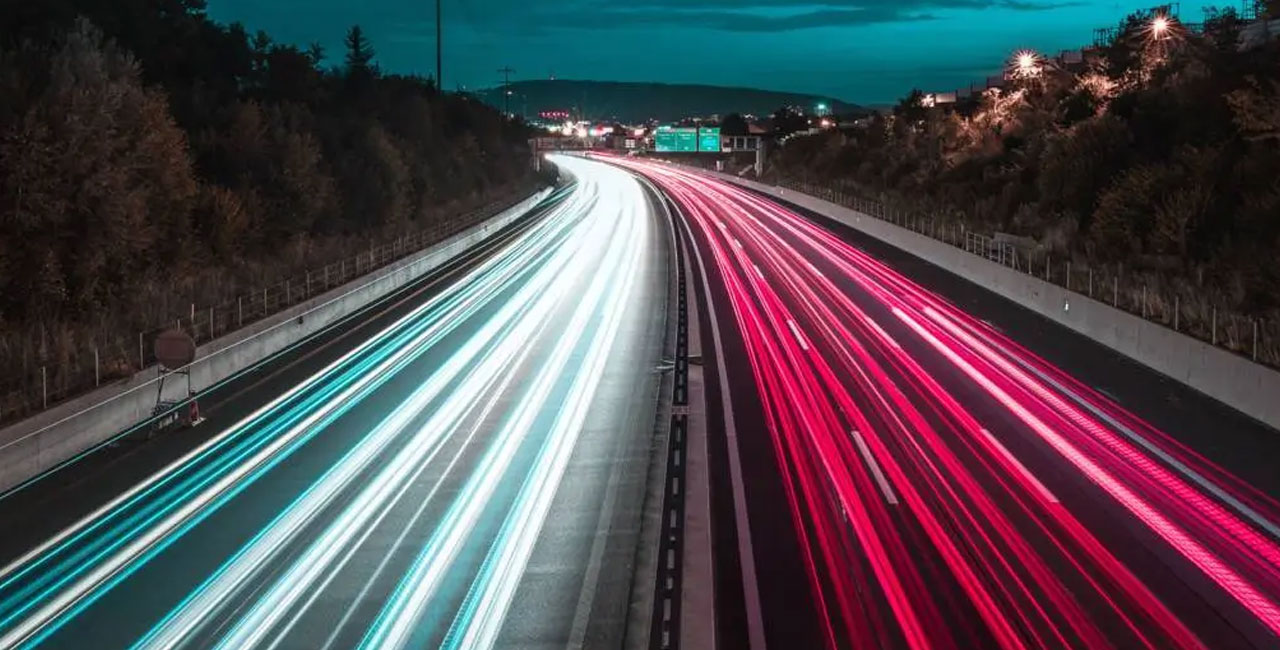
Sustainable mobility and care for the environment are (fortunately) two issues that are at the forefront of our society. The carbon footprint has gone from being an unknown term to creating a huge awareness and in this aspect, transport has a lot of weight.
Vehicles, the way we travel and the roads themselves are undergoing many changes to reduce their impact. When we talk about ‘roads of the future’ we are referring to a series of technological implementations to improve their efficiency.
What changes and innovations do today's roads need? When will these roads of the future be real? In this post we analyse the main trends in sustainable mobility that are starting to be implemented or are expected to be implemented soon.
Road safety has increased considerably over the last decades thanks to improvements in road layout. To make the next breakthroughs we must rely on the potential of technology. Improvements in automation and connectivity, through digitalisation, will enable us to make the transition to the roads of the future.
When we talk about smart roads, we are referring to the use of 5G, artificial intelligence and big data to connect roads with vehicles. Until now, roads were only a physical infrastructure, but with these implementations they become information highways.
Streetlights, traffic signs and other elements will also be able to be equipped with artificial intelligence and provide information to users or warn them of infractions. In addition, we will be able to know in advance about eventualities on the road, traffic situations or structural damage and alternatives to avoid them.
Photosensitive paints, which light up at night and help to reduce accidents, are an example that has already been in use for years. Dynamic paints would be a further step in this field. Their function is to warn of temperature and weather conditions by changing colour or generating symbols on the pavement.
Intelligent roads are safer, not only notifying of risks but, in case of an accident, they could automatically call for assistance. This would reduce waiting times.
The maintenance of pavements involves considerable annual investments and any area in poor condition increases the possibility of an accident. Prevention and repair are very important in this aspect.
Sensors based on the internet of things and big data systems are beginning to be used to prevent and know in detail the state of infrastructures.
In addition, new types of asphalt are being studied with the capacity to heal thanks to the incorporation of rejuvenating agents.
On the other hand, technological developments are being applied to reuse deteriorated materials in the manufacture of new mixes. So the environmental impact is less, as the materials are not created from scratch and less waste is generated.
Graphene is much stronger than steel and lighter than aluminium. It is being considered for use in sections of road to increase its lifespan and make it smoother and safer to drive on. The UK will start testing this material on its roads and, depending on the results, more countries could join the list.
Electric vehicles, hydrogen, biofuels and sustainable fuels are becoming increasingly important and will move from being complementary to mainstream sources.
These energy sources reduce emissions, help decarbonise the transport sector and contribute to sustainable mobility.
There are more and more electric charging stations and the prospect for the next few years is to have an extensive network of ultra-fast charging points. So that drivers have sufficient charging zones on their routes and do not need more than 5 to 10 minutes to provide sufficient vehicle autonomy.
It consists of a system under the asphalt that generates strong electromagnetic fields, so that the road itself would be producing energy for the vehicles.
South Korea, Sweden, Germany and the UK are already testing different systems so that roads can charge electric vehicles on specific stretches of road.
Sustainable mobility and the roads of the future have been in the process of being implemented for years to become part of our present. Their benefits go far beyond safety and environmental care, they have positive repercussions on our quality of life in general.
In this post we have focused on roads and medium and long distances. But short distances also play a very important role in sustainable mobility. In this aspect, cities are limiting the use of private vehicles, especially if they have non-renewable energy sources. On the other hand, the use of public transport is being promoted and more areas are being made available for the use of bicycles and scooters.



This has been the work of Sr. Concejo

